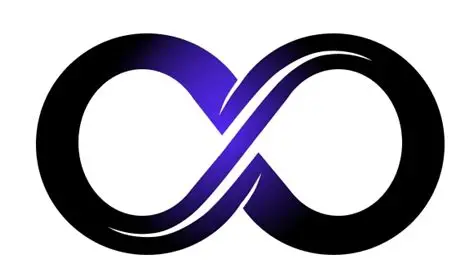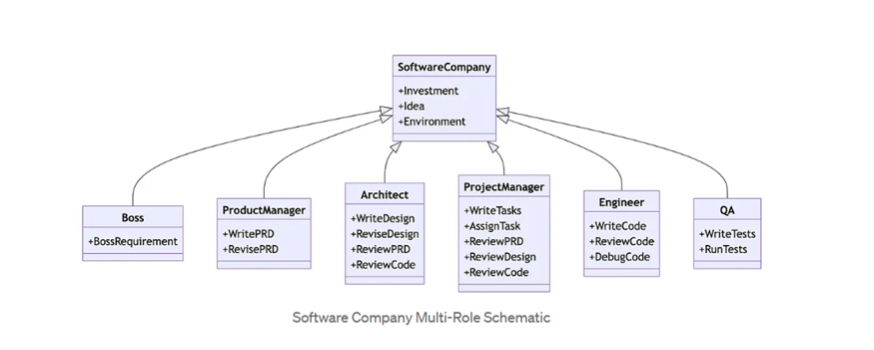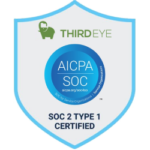MetaGPT: The Future of AI Collaboration and Autonomous Software Development
MetaGPT is an innovative open-source framework that blends human procedural knowledge with the power of AI agents driven by large language models (LLMs) to build software the way real companies do. Think of it as a virtual software company, where every role — from the product manager to the architect and engineer — is played by an intelligent AI agent working in harmony. (IBM once described it as an AI software company in action.)
Developed by DeepWisdom, the brainchild of Chenglin Wu, MetaGPT is rooted in cutting-edge research from the paper “MetaGPT: Meta Programming for Multi-Agent Collaborative Framework” by Hongyang Yang and colleagues (ICLR 2024).
At its core, MetaGPT turns collaboration into code. It coordinates multiple specialized AI agents through Standard Operating Procedures (SOPs) — structured workflows that let these agents think, plan, and build together like a real development team. Whether it’s designing software, writing code, debugging, or creating documentation, MetaGPT ensures every phase flows smoothly and logically.
Today, MetaGPT is one of the most talked-about projects on GitHub, often described as a “software company in a box.” Using GPT-4, it simulates the complete ecosystem of a tech team, complete with project managers, software architects, and engineers, all collaborating through an intelligent command-line interface (CLI).

MetaGPT

How Does It Work?
MetaGPT takes a one-line requirement as input and outputs user stories, competitive analysis, requirements, data structures, APIs, documents, and more. Running the project generates different personas’ outputs, such as product goals, user stories, competitive analysis, project requirements, and UI design drafts. The framework generates code, diagrams, and associated documents, which are stored in workspace folders. Diagrams are created using mermaid.js.
In essence, MetaGPT doesn’t just generate code — it builds software the way humans do, only faster, more consistent, and endlessly scalable.
Where MetaGPT Truly Shines: Your AI Co-Pilot for Complex Projects
Forget the noise about “just another AI tool”—MetaGPT is a genuine paradigm shift. It’s the quiet powerhouse that is fundamentally transforming how teams, businesses, and even scientific researchers approach projects. It thrives not in the simple tasks, but in the complex, multi-layered challenges that demand a rare blend of creativity, rigorous logic, and machine-like precision.
What gives MetaGPT this superpower? Its genius lies in its modular structure and its reliance on SOP-driven (Standard Operating Procedure) workflows. This design allows it to perfectly simulate and manage the kinds of problems that usually require an entire human assembly line: engineers, analysts, designers, and project managers.
This isn’t just automation; it’s AI orchestration. Here is a deep dive into the high-impact arenas where MetaGPT truly flexes its muscles and delivers game-changing results:
- Automated Software Development — Your Ready-to-Go AI Engineering Firm
Imagine walking up to an AI and saying, “Build me a fully functional, sleek task management application,” and then watching it not only grasp your vision but autonomously execute the entire project lifecycle: planning, design, coding, testing, and documentation. That’s not a daydream; that’s the current reality of MetaGPT in action.
MetaGPT can take a simple idea and transform it into a robust, working product by intelligently simulating an entire, cohesive development team. Each “virtual employee” has its own specialized expertise and defined responsibilities, eliminating the friction and hand-offs that plague human teams.
Here’s the breakdown of that self-organizing “AI Company” under the hood:
- The Product Manager Agent: This agent starts the process by acting as the human-facing interface. It meticulously gathers requirements, defines every feature, and prepares a detailed Product Requirements Document (PRD)—just as a seasoned human PM would.
- The System Architect Agent: Once the vision is clear, this agent steps in to create the blueprint. It maps out the technical architecture, defines the data flow, and designs the necessary system integrations, ensuring a seamless, scalable foundation.
- The Engineer Agents: These are the builders. They take the architect’s blueprint and write the actual code, focusing on clean, maintainable logic. They implement features, build components, and ensure every module functions as intended.
- The QA Agent: The final checkpoint. This agent relentlessly runs automated checks, validates all functionality against the initial PRD, and guarantees the end product is polished, bug-free, and perfectly matches the user’s expectation.
This is more than just AI writing code snippets; it’s a coordinated, role-based collaboration where every agent “understands” its purpose in the overall chain. It’s what makes MetaGPT a clear, tangible glimpse into the future of fully autonomous software engineering—a future where your concepts can literally build themselves in record time.
- AI-Augmented Product Design — The Tireless Creative Partner
Every phenomenal product begins with a spark of genius. But moving that initial concept from a napkin sketch to a functional prototype can be an agonizingly slow, iterative process. MetaGPT cuts through that delay, acting as your ever-vigilant, creative, and tireless product design assistant.
It jumps into the brainstorming phase, helping you:
- Generate Feature Ideas: Brainstorming potential features and prioritizing them based on feasibility and market impact.
- Outline Product Specs: Creating precise, detailed product specifications that guide the development team.
- Suggest UI/UX Guidelines: Offering intelligent, audience-aligned recommendations for design, ensuring the user experience is intuitive and matches your brand personality.
For entrepreneurs and fast-moving startups, this capability is a massive competitive win. Instead of burning weeks on initial market research, tedious wireframing, and internal debates, MetaGPT helps you transition from the vague phrase “what if” to the decisive call “let’s build it” in mere hours. It’s the closest you can get to having a unified team of designers, market researchers, and analysts—all fused into one hyper-efficient virtual collaborator.
- Business Process Automation — Your Always-On Operations Assistant
MetaGPT’s utility isn’t confined to digital products; it is perfectly capable of running the complex machinery of your business operations.
Think of it as an intelligent, invisible operations assistant that inherently understands your organizational workflows, rigidly adheres to company processes, and ensures that everything runs smoothly, consistently, and without human bottlenecks.
It can transform operational tasks by enabling:
- Automated Customer Onboarding: Completely handling the multi-step process from sending initial documentation to verification and personalized communication follow-ups.
- End-to-End Marketing Execution: Designing and executing sophisticated marketing campaigns, including initial content creation, distribution scheduling, and deep data analysis of the results.
- Dynamic Project Management: Managing all project documentation, tracking progress across teams, anticipating delays, and ensuring seamless delivery pipelines.
This level of operational automation does much more than just save human labor. It virtually eliminates human-induced error rates, bypasses the common bottlenecks caused by waiting for approvals, and injects a new level of consistency and reliability into every single process. MetaGPT can truly be the invisible employee that is always working, never sleeps, and maintains a perfect Standard Operating Procedure.
- AI Research Collaboration — Turbocharging Scientific Discovery
In the worlds of academia and corporate R&D, breakthroughs rely on intense, focused collaboration. MetaGPT takes this essential spirit of teamwork and scales it with the speed and precision of AI.
It can simulate a completely self-directed research group:
- The Literature Agent: Autonomously scours databases and journals for all relevant, cutting-edge literature.
- The Review Agent: Critically analyzes and synthesizes the collected data, identifying gaps and validating methodologies.
- The Drafting Agent: Takes the synthesized findings and drafts a structured, coherent abstract, manuscript, or technical review.
- The Validation Agent: Runs checks, validates the consistency of the findings, and offers critical, evidence-based critiques.
Working in concert, these AI collaborators can rapidly generate structured, data-backed research papers, detailed technical reviews, and innovative hypothesis models. This makes MetaGPT a phenomenal research accelerator, amplifying human curiosity with tireless machine precision. It doesn’t replace the core human insight, but it gives scientists and academics a massive head start by automating the slow, labor-intensive groundwork.
- Data Analysis and Reporting — Transforming Raw Data into Strategic Decisions
In today’s digital economy, every organization is awash in a sea of data. The challenge is no longer collection, but the ability to rapidly derive meaning from the chaos.
MetaGPT automates the entire analytics pipeline, from the moment data is collected to the moment a decision is made.
It achieves this by:
- Data Preparation: Assigning specialized agents to autonomously clean, standardize, and preprocess raw datasets, ensuring data integrity.
- Pattern Discovery: Deploying dedicated analytics agents to scour the refined data, uncovering hidden patterns, emerging trends, and critical anomalies.
- Insight Generation: Producing human-readable, narrative-driven reports and clear visual summaries that allow human decision-makers to grasp the insights and act on them immediately.
Whether you are modeling complex financial scenarios, generating accurate market forecasts, or performing high-stakes risk analysis, MetaGPT brings unparalleled accuracy, repeatability, and speed to every stage of the data lifecycle. It’s the scalable, tireless data science team you always wished you had.
- Simulation of Organizational Behavior — A Digital Lab for Human Psychology
One of MetaGPT’s most intriguing, and often underestimated, applications is its ability to simulate human-like team dynamics and organizational behavior.
For researchers in organizational psychology, leadership studies, or AI ethics, MetaGPT provides a perfectly controlled virtual lab environment. Within this environment, virtual agents can:
- Negotiate and Define Roles: Simulate the complex process of team formation and task delegation.
- Debate and Formulate Strategies: Model strategic discussions, conflict resolution, and the emergence of group consensus.
- Make Collective Decisions: Demonstrate how distributed intelligence leads to a single, unified group action.
This simulation capability is revolutionary. It helps technologists and social scientists understand how collective intelligence naturally emerges in both human and synthetic teams, giving us profound insights into the future of human-AI collaboration. It is, in essence, a brand new playground for studying digital societies and synthetic cognition.
Pros of MetaGPT
MetaGPT’s rising popularity in the AI community isn’t by accident. It offers a unique combination of technical sophistication and practical utility. Let’s explore its core advantages.
- Structured Collaboration
Unlike earlier autonomous frameworks, MetaGPT brings order and predictability to the chaos of multi-agent interaction. The SOP-based design ensures that every agent follows a clear process, avoiding logical drift and duplication of work.
- Scalability
MetaGPT’s modular architecture allows developers to add, remove, or modify agents as needed. Need a marketing strategist AI or a cybersecurity auditor agent? You can define new roles using the same SOP framework.
- Human-Like Workflows
Each agent mirrors a real professional — making it easier for teams to interpret what the AI is doing.
You’re not just getting random outputs; you’re watching an AI company in action, complete with reports, documentation, and code reviews.
- Improved Accuracy and Quality Control
The multi-agent feedback loop ensures that outputs are continuously reviewed. A QA or reviewer agent can catch and correct mistakes made by other agents — a process similar to human peer review.
- Open-Source Ecosystem
Being open source, MetaGPT offers flexibility for developers and researchers to modify, extend, or integrate it with other frameworks like LangChain, AutoGen, or CrewAI.
- Reduced Development Time
With MetaGPT, the time from idea to prototype shrinks dramatically. Tasks that typically take weeks — like designing architecture or writing backend logic — can be done in hours with proper prompt engineering.
Cons of MetaGPT
No innovation comes without challenges. While MetaGPT is incredibly powerful, it has a few limitations worth understanding — especially for enterprise adoption.
- Computational Overhead
MetaGPT’s multi-agent model means multiple LLM instances run simultaneously. This can lead to high API costs and latency, especially when using GPT-4 or other large-scale models.
- Context Synchronization Issues
In long workflows, agents can lose track of shared context or misinterpret previous outputs. Though the message bus system minimizes this, it’s not foolproof.
- Prompt Sensitivity
MetaGPT’s effectiveness still depends heavily on prompt design. Poorly crafted SOPs or vague role descriptions can cause cascading errors in output.
- Limited Real-World Autonomy
While MetaGPT can plan and execute multi-step tasks, it still requires human supervision for high-stakes applications like production deployments or legal reviews.
- Debugging Complexity
When something goes wrong, it’s often hard to pinpoint which agent caused the issue. This multi-layered orchestration adds complexity to debugging and system tracing.
Alternatives to MetaGPT
MetaGPT exists in a rapidly evolving landscape of multi-agent frameworks. Here’s how it compares to other players:
| Framework | Description | Key Difference |
| AutoGPT | One of the first autonomous AI systems capable of self-directed task execution. | Focuses on a single recursive agent rather than a structured team. |
| BabyAGI | Lightweight framework for autonomous goal management. | Simpler loop-based design; lacks multi-role collaboration. |
| CAMEL | Cooperative AI agent communication system. | More focused on dialogue simulation than workflow orchestration. |
| CrewAI | A recent framework that builds agent crews for projects. | Similar goal but less formalized SOP system than MetaGPT. |
| LangGraph / AutoGen | Tools for managing multi-agent conversations and workflows. | Complementary rather than competitive; can be integrated with MetaGPT. |
Industry Insights
The MetaGPT team and open-source community are actively expanding the framework’s capabilities. Some exciting directions include:
- Adaptive Role Learning: Agents that evolve their SOPs over time based on performance feedback.
- Memory Integration: Persistent long-term memory using vector databases like FAISS or Weaviate.
- Tool Integration: Support for external tools — from GitHub and JIRA to browser automation — enabling more real-world actions.
- Reinforcement Learning Extensions: Reward systems for agents that improve collaboration quality.
- Enterprise-Grade Security: Sandboxed environments and permission-based data access for corporate deployments.
Industry analysts are calling frameworks like MetaGPT a stepping stone toward Artificial General Collaboration (AGC) — a state where AI systems collectively reason, plan, and execute goals with human-level adaptability.
Frequently Asked Questions about MetaGPT:
- What makes MetaGPT different from other AI frameworks?
MetaGPT introduces structure, hierarchy, and coordination — turning unorganized agent communication into a productive, goal-driven process.
- Is MetaGPT suitable for enterprises?
Yes, but it requires customization. Enterprises can define SOPs aligned with internal workflows and connect MetaGPT with existing tools and APIs.
- Does MetaGPT require coding knowledge?
Basic Python knowledge helps, but pre-built templates make it accessible even for non-developers interested in experimenting with autonomous AI.
- Can MetaGPT work offline or with open-source LLMs?
Yes, it supports integration with self-hosted models like LLaMA, Mistral, or Falcon, allowing more privacy and cost control.
- How do you get started with MetaGPT?
Clone the repository, install dependencies, configure your API key (OpenAI or local model), and start with the sample workflows. It’s straightforward and well-documented.
Conclusion: ThirdEye Data’s Take on MetaGPT
From a technical and business standpoint, MetaGPT represents a defining moment in AI evolution — where language models evolve from passive responders to collaborative digital professionals.
At ThirdEye Data, we view MetaGPT as more than a research project — it’s a prototype of the AI workforce of the future. It shows that large language models can go beyond simple Q&A systems to handle complex, multi-step reasoning and team-based problem solving.
For organizations, MetaGPT offers:
- Faster product development cycles
- Reduced operational overhead
- Scalable AI-driven project management
- Improved traceability through SOP-based transparency
However, true adoption requires strategic implementation — defining clear SOPs, ensuring ethical oversight, and maintaining human control over final decisions. The best use of MetaGPT isn’t to replace human teams but to augment them, letting AI handle repetitive planning and documentation while humans focus on innovation and creativity.
In essence, MetaGPT doesn’t just simulate a company — it redefines what it means to build one.
As AI collaboration frameworks mature, MetaGPT stands at the forefront of this movement — transforming how we think, build, and collaborate in the age of intelligent automation.




